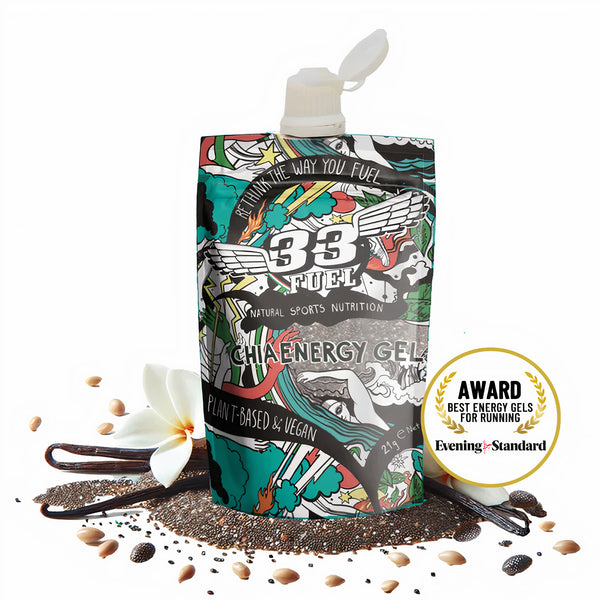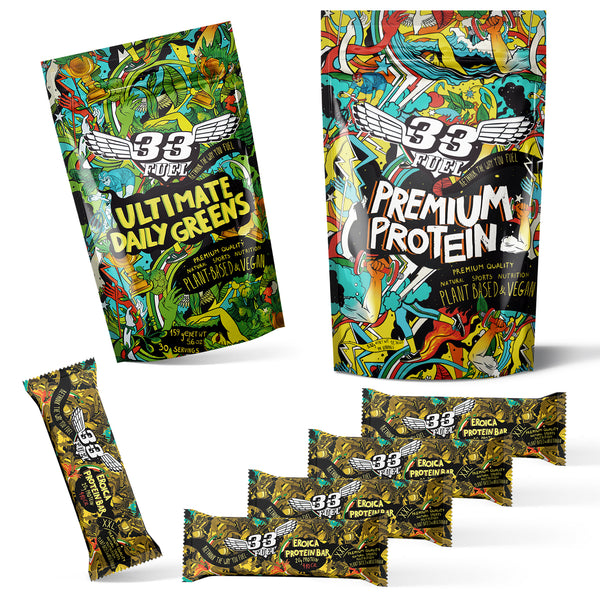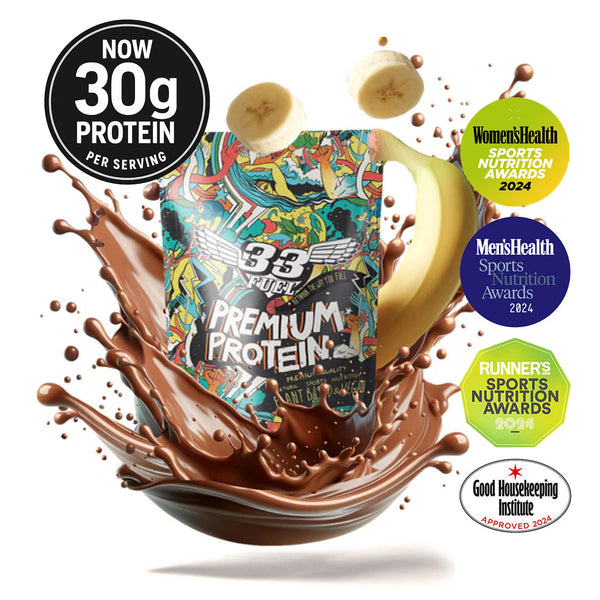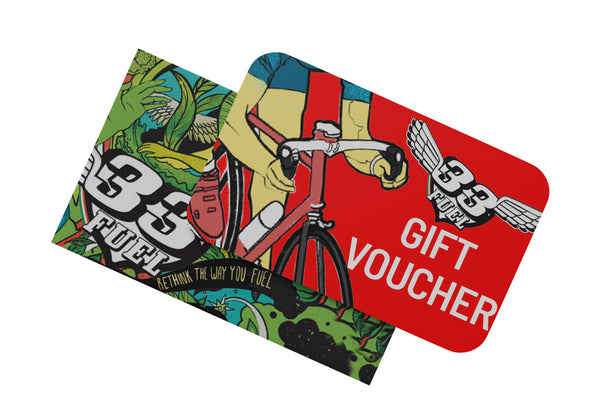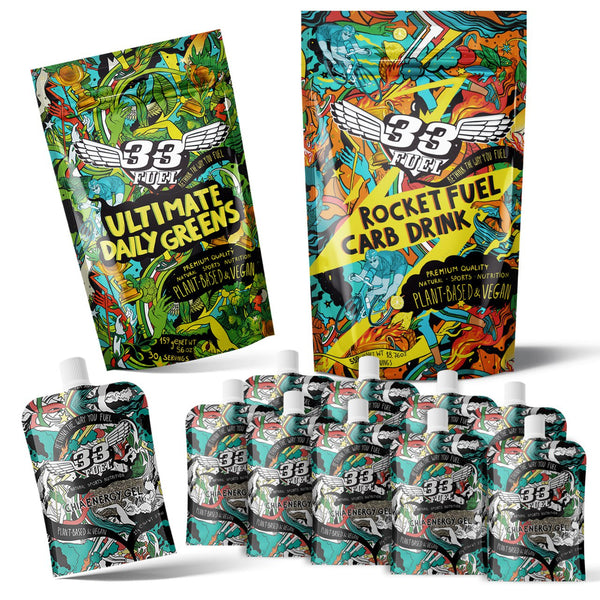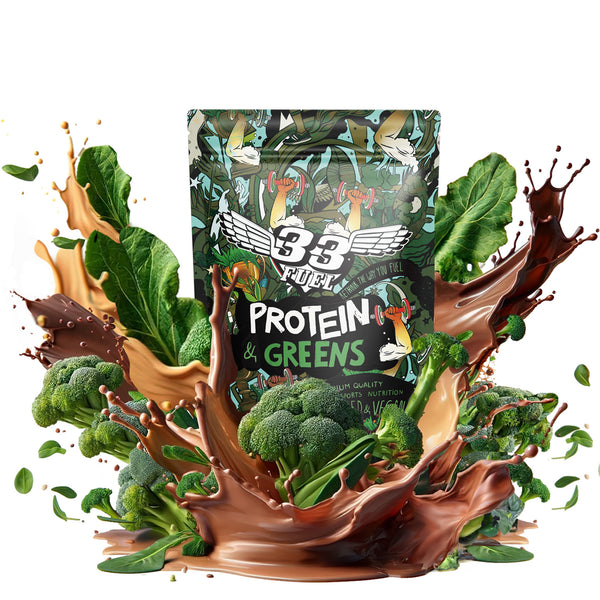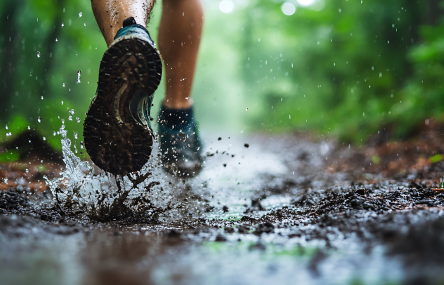How To Cycle Faster Downhill

For cycling success no stone is left unturned. Diet is optimised, training is blitzed and kit fettled. Yet technique for cycling faster downhill and in corners is often overlooked. With a world of free speed on offer and all for no extra physical effort you can easily harness the twin powers of momentum and gravity to see your times tumble
Shop our award-winning sports nutrition
A misspent youth racing motorcycles and instructing on road and track taught me a lot about getting through corners quickly on two wheels, without ending up in the scenery in the process. This skillset has since proved incredibly useful for cycling and triathlon, letting me pick up places for free as soon as the going gets twisty or heads downhill. Here’s how you can do exactly the same.
Max vision
You can only ride as fast as you can see. Boost your vision to near superhuman levels and read the road further ahead by looking as far ahead as possible:
- Move around the bike - raise your head, crane your neck, whatever it takes to scan the road ahead for the furthest point you can see
- The more you can see, the more early warning you have about what’s coming next - whether corner, puddle or manhole cover - and the faster you can get through it
- When other riders are in your field of vision, look ‘through’ them not at them - you go where you look, so staring at other riders mid-corner is not advisable

How not to do it - hugging the white line halves vision around the corner, tense and upright body limits speed and grip, while head (and eyes) facing the rock wall ahead doesn’t bode well for getting around the corner at all
Road position
As the road kinks and curves, boost your vision further by shifting position:
- For right handers stay as far left as possible, for left handers stay as far right as possible. This allows you to see further ahead
- In closed roads events use the wrong side of the road - no need to follow the majority sticking to the ‘right’ side of the road out of habit
- Beware road condition. Potholes, drains and road rubbish are worse the nearer the kerb you get
Junction alert
Approaching a junction (that you’ve now seen in loads of time thanks to #1 and #2 above), switch mentally from speed to safety.
- Ride as far away from it as possible
- Cars nearby? Don’t rely on indicators. Look at the driver’s head, hands, and the car’s front wheels - they’re the best early warning of unexpected movement

The signs have it - corners ahead, while the stone walls give a very good indication where they’re going. The mist is a bit of a bugger, mind
Read the signs
As you learn to see further ahead, look for other signs telling you what’s coming. There are a lot:
- Road signs, eg: corner ahead. The more signs, the sharper the impending corner
- Hedgerows/fences/pylons: their direction can be a clue where the road goes
- What time is it? You may be wide awake mid-ride at 7am on a Sunday, but that minicab pulling out of the petrol station with his fogged up windows has been on shift for the last 17 hours and is half-asleep. Ride accordingly
- Use all sensory inputs. Smell cowshit/diesel? It’s probably on the road. Hear an ambulance/police car/low-flying jet - beware gawping drivers watching that and not looking out for you
Prepare for success
Braking, selecting the best gear for max drive out of the corner, and moving into the correct road position and appropriate body position all need doing before you arrive at the corner.
This leaves 100% of your attention for managing the corner itself.
Line dance
On a closed course the fastest line is a traditional racing line:
- Approach as wide as you can – as far to the left for a right hander, as far to the right for a left hander
- Stay wide until you see the corner exit - the point where the corner opens out and you can see the road beyond. When you see the exit take the shortest straight line to reach it, clipping the inside of the corner as you go. The point you clip is called the apex and varies for every corner.

Stay wide until you see the exit, then hit the shortest line between you and it - when you can see the road’s clear ahead you can even use both sides
On the open road:
This ideal line is affected by traffic and how far ahead you can see.
If you can see the exit coming into the corner, follow the process above making any allowances needed for road and traffic conditions.
When you can’t see the exit, determine how tight the corner is using the vanishing point.
This is the point where the two sides of the road converge. If it’s getting closer to you the corner’s tightening up, if it’s moving away the corner’s opening up.

Meet the vanishing point - it’s where the two sides of the road converge as the corner vanishes out of sight. If it’s getting nearer as you approach the corner’s tightening, if it’s getting further away it’s opening out
Cornering, the golden rule
In any corner stay wide until you see the exit.
The temptation to turn in too early is strong, but this will make you run wide on the exit forcing you to lose speed or crash.
Once past the apex, get your bike upright and power down as soon and as hard as you can.
Too many riders focus on corner entry. Instead maximising exit speed is where the biggest gains lie - every mph added here is multiplied on the subsequent straight.

The basics of faster cornering technique - road and body position - are the same for bicycles as for motorcycles, as 33Fuel’s Warren demonstrates. Here the similarities end however. For example, wearing leathers to cycle will not do you any favours, while sticking your knee on the floor mid-corner when cycling is better known as a ‘really big crash’
Body position
The right body position lets you manage - and maximise - trye grip.
- Keep the inside pedal up, weight through the outside pedal
- Swivel your head for max vision into and around the corner
- Keep your eyes up, hang off the bike slightly, pointing your inside knee, shoulder and head into the corner. This lets you keep the bike more upright for the same speed, increasing grip
- Grip bars firmly but lightly, keep arms slightly bent to absorb bumps
- Relax and breathe - holding your breath around a corner means you’re going faster than your mind can keep up with!
Now your body should be lightly suspended over the bike letting it move slightly beneath you, letting you feel what the tyres are doing. This feeling takes time to develop but as it does confidence, speed and saftey margin all increase.
Drills for faster downhill riding and cornering
1 Vision
Practice looking as far ahead as you can and reading the road in the car. No need to wait until you’re out on the bike
2 Road position
Find a quiet corner, hop off your bike and observe the corner from different viewpoints on the road. See how position affects how much - or little - you can see. Walk through the corner on different lines to discover which provides the best view. The better the view, the faster the line
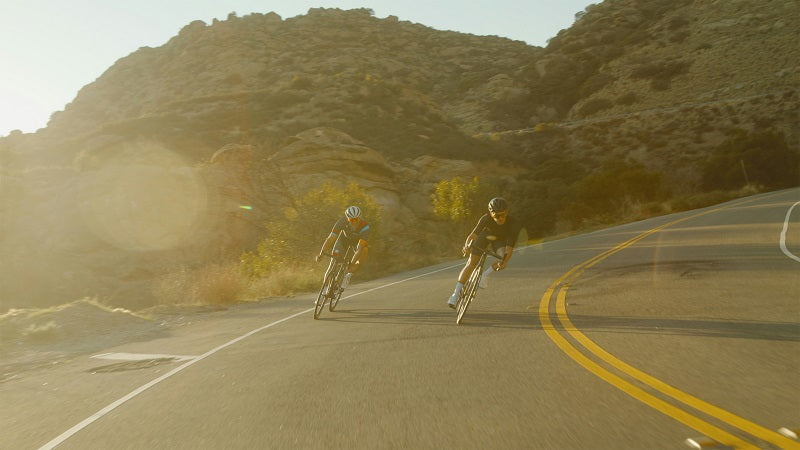
3 Emergency stop
Practice braking progressively harder in a straight line on a clear, dry stretch of road. Focus on feeling what the front tyre is doing. You’ll be amazed how hard you can haul up.
- Focus on the front brake, not the back - the front is where 70% of your braking comes from
- Practice locking the rear so you won’t freak if it happens entering a corner. Rear lockups are rarely terminal, front ones almost always are
4 Rinse and repeat
Develop feel for grip by repeating the same corner several times. The more you get used to the corner, the more you can focus on really feeling what your tryres and bike are doing
5 Raindance
Try a twisty descent in the wet to give your body positioning a workout. In the wet maximising grip by minimising lean is all. Dance all over that bike to see how much grip you can hang onto. Back in the dry you’ll see your speed rocket.
A quick note on target fixation
The idea that you go where you look is at the heart of all fast cornering. It also applies to avoiding crashes.
For example, if you feel you’re going into a corner too fast, the natural reaction is to brake. This sits your bike up and starts you running wide.
When this happens the next natural reaction is to stare at the kerb/tree/spectator you are now headed for. In road traffic accident speak this is called ‘target fixation’ – by looking at the object in question you are guaranteeing you will hit it.
To increase your survival chances exponentially, look where you want to go, relaxing your body, breathing naturally and letting the bike take you there. Nine times out of ten it will because the limits of grip are usually much further away than we think.
One more performance upgrade - nutrition
With cornering and descending now up to world class levels, make sure your nutrition is too. Add 33Fuel’s unique Elite Meal Replacement Shakes to power through and recover from your toughest sessions and races, and our gamechanging Chia Energy Gels for incredible - and delicious - fueling results on the go.
Packing the 33 most powerful athletic superfoods into one mighty Shake, our Elite Meal Replacement Shakes are your ticket to a major performance upgrade when it matters most
More performance-boosting content
From the 33Fuel YouTube Channel
From the 33Fuel Podcast
From the Blog
Coffee and athletic performance
Salbutamol, asthma and the Tour de France's missing marginal gain
Bicycle v 200mph superbike, down Alpe d'Huez - who wins?
Sprint training with Mark Cavendish
Eating cr@p - why pro athletes have terrible nutrition




